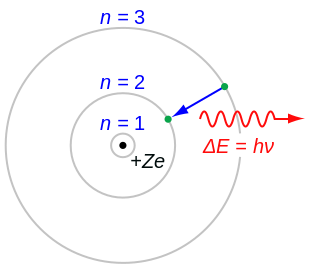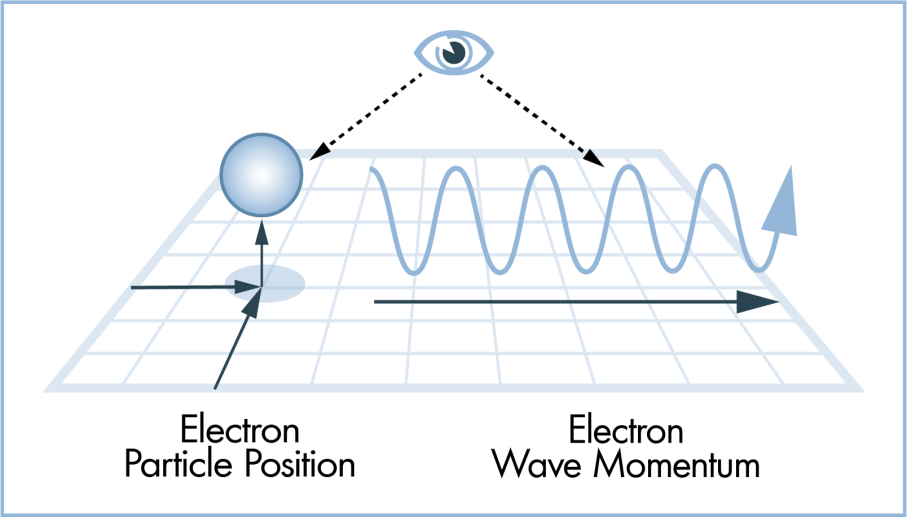It is common knowledge that no information can travel faster than light. Einstein’s Special Relativity has become so ingrained in the minds of the public that contrary suggestions are often met with ridicule. However, both mathematics and experimentation have confirmed the existence of a phenomenon that seems to ridicule Einstein: quantum entanglement.
Electron Spin
In each of the electron clouds around the nucleus (orbitals) described previously, a maximum of two electrons can exist—i.e., with a probability of residing in a position that cannot be pinpointed exactly. Each electron in an orbital must have the opposite spin (denoted “up” or “down”) of its counterpart. The idea of electron spin is not conducive of physical rotation but rather the direction of the magnetic dipole moment of the electron. Elements with several unpaired electrons (and thus the dominance of one dipole direction) include iron and cobalt, rendering them magnetic in nature.
Courtesy of Quora
For any two electrons with a high probability of occupying a specific orbital, the Uncertainty Principle precludes knowledge of their position and momentum; however, knowledge of one electron’s spin immediately deduces knowledge of the other, implied by the Pauli Exclusion Principle.
Entanglement at a Distance
Now imagine a pair of distinct electrons not bound to any particular nucleus. By applying radiation to the electrons simultaneously (e.g., shooting them with a single laser beam), their spins are rendered into a superposition. As long as there is no external observer present during the application of radiation and subsequent separation of the electrons, each particle exists in a probabilistic spin of “up” and “down” simultaneously.
Through electrostatic repulsion and other separation techniques, the electrons are separated a substantial distance, far greater than the radius of any atom. Still having not read the states (spins) of the electrons, an experimenter applies more radiation to one of the electrons and notices that the other electron exhibits the exact same behavior, regardless of its separation distance. The two electrons are thus entangled: effects on one instantaneously induce effects on the other.
The experimenter proceeds to measure the spin of one electron, collapsing the superposition described by the electron’s wavefunction. Remarkably, the Pauli Exclusion Principle dictating opposite spins in a pair holds for entangled particles not bound by an orbital, so knowledge of one electron’s spin immediately conveys knowledge of the other’s. It is as if the information is conveyed at an infinite rate—id est, faster than light.

Courtesy of Universe Review
Implications
Time Travel
While quantum entanglement may threaten the veracity of a component of Einstein’s Special Relativity, his equations do acknowledge faster-than-light travel as a means of traveling backwards through time, due primarily to the idea of the speed of light defining “the present.” Special Relativity also states, however, that attaining a speed equal to or greater than that of light would require infinite energy, for mass approaches infinity as velocity converges to the speed of light. Despite the experimental veracity of information seemingly traveling faster than light, “information” is abstract and massless, so energy remains conserved. Another challenge to the “time travel” idea is that entanglement seems to apply only to subatomic particles, and even electrons are sensitive to separation (only massless photons exhibit perfect entanglement).
Teleportation
Faster-than-light travel into the past is contingent upon instantaneous travel over distance—i.e., teleportation. Researchers have been studying quantum teleportation to address the aforementioned objection regarding macroscopic objects’ inability to entangle. To achieve direct teleportation with an object—e.g., a human being—one must somehow entangle every subatomic particle comprising the object with an exact pattern of particles in the desired location such that the object exhibits a superposition that probabilistically upon observation collapses into the desired “point B” position—i.e., every particle must individually collapse into the wanted position and manifest itself as a component of the object itself. Not only is such an aggregate probability beyond any human conception; it is not entirely clear how the particles would become entangled in the first place. Purpose is defeated if the particles must be relatively close during the actual process (e.g., applying radiation simultaneously).
Quantum Computing
In contrast with the ideas above, quantum computing is certainly feasible and has been practically (albeit primitively) realized. A traditional computer incorporates low and high electrical signals (bits) to convey information in processing and storing. Computing speed and power is limited by the distance between different components and the relatively low speed of electrons through the circuits.
Qubits (quantum bits), on the other hand, allow instantaneous communication among circuit components and networks due to selective entanglement. The precise ramifications of such instantaneous communication will be discussed in the next post.

Courtesy of CNet



